Chasing Fjords: A Journey Through Norway’s Quiet Magic
August 6-12, 2025
For years, Norway felt like a distant dream. While living in New York, the idea of visiting this majestic country seemed far-fetched—more fantasy than possibility. Even after moving to Germany, it took three years before I finally made the journey. Norway isn’t just a train ride away; it requires a bit of orchestration. A train to Frankfurt, a flight to Bergen, and the ever-unpredictable Deutsche Bahn to contend with. Thankfully, our journey began smoothly.
We arrived in Bergen around midnight, catching only a few hours of sleep before boarding the 7 a.m. train to Flåm. The route took us through Myrdal, and then onto the Flåm Railway—often hailed as one of the most beautiful train rides in the world. Despite our exhaustion, Paul and I stayed wide awake, captivated by the scenery: colorful villages nestled in valleys, towering fjords, and the thunderous Kjosfossen waterfall. As we paused to take photos, mist touched our faces and music floated through the air. A woman in red danced atop the rocks—Huldra, the elusive forest spirit of Norse mythology. A touch theatrical, perhaps, but charming in its own way.
Flåm greeted us with a massive cruise ship and steep food prices—a reindeer hotdog for $20, anyone? We grabbed a modest sandwich and waited for our bus to Aurland. I had read on the blog Heart My Backpack that Flåm could be touristy, and I was craving something quieter. Just fifteen minutes away, Aurland offered exactly that: serenity, charm, and breathtaking views.
Our hotel, Vangsgaarden Gjestgiveri, sat beside the Sognefjord. Though our room didn’t face the water (a trade-off for affordability), the location was perfect—just a short walk to the tiny town center. The walls, however, were thin. Above us, an a cappella quartet from Oslo were upstairs. It felt as if they were standing at our front door or jumping on their floor. Paul, never one to shy away from confrontation, asked the front desk to intervene. The young man obliged, and the singers quieted down with grace.
Aurland’s highlights were simple yet profound: a walk to the Turlifossen waterfall, a brisk hike, Paul’s icy dip in the fjord, and the most divine cardamom bun at Marianne Bakery & Café. Breakfast introduced me to brunost, Norway’s sweet brown cheese made from whey. Surprisingly delightful, especially paired with jam. We also had a pleasant surprise from the a capella group. They sang us a song before they bid us farewell.
From Aurland, we returned to Flåm to catch the express boat to Balestrand. Had I known we could board from Aurland, I would have. Still, the detour may have been a blessing. The line at Flåm was already quite long. The Sognefjord—the longest and deepest in Norway—unfolded before us in all its grandeur. Mountains rising 1600 meters above sea level mirrored the fjord’s depth. Photos fail to capture its scale; it’s something you must experience in person.
In Balestrand, my hopes of staying at the iconic Kviknes Hotel was dashed—it was fully booked months in advance. Our fallback, Kringsjå Hotel, was modest and outdated, but surprisingly perfect. The owner, Magnar, was a treasure trove of warmth and wisdom. The hotel, often used as a children’s camp, had low sinks, dusty outlets, and a smashed fly on the window of our hotel room—but also clean beds, guest kitchens, laundry facilities, and game rooms. After a rainy five-hour hike, these amenities were a godsend.
Food in Norway is pricey. A simple meal of burger, fries, and chicken cost $50. Heart My Backpack suggests splurging on high-end restaurants since mid-range ones cost nearly the same. Still, the breakfasts were satisfying—Norwegian waffles, brunost, and we packed sandwiches for our hike.
Paul, recovering from a post-Covid asthma diagnosis, took the hike slowly. We climbed to 400 meters above sea level, through rain and mud, stopping at a cozy day cabin, Balabu, with a wood-burning stove and children’s books. Families with toddlers arrived for a playdate—how they climbed that high remains a mystery. Hiking seems woven into the fabric of Norwegian childhood.
Though weary, we pressed on to Buråsi, as Magnar had recommended. The view was worth every step to 575 meters above sea level. Waterfalls streamed down the mountains, and a quiet valley lay below. It was awe-inspiring—one of those rare moments when nature silences all thought.
Descending was quicker, though I fell three times. Rain poured as we returned to the hotel, grateful for the washer, dryer, and shoe dryer.
That evening, we dined at Kviknes Hotel. King Wilhelm II once frequented it, and the chair he sat in still exists. Our waiter showed us the cushion with his name and that of artist Hans Dahl. A woman named Birgit, sipping tea nearby, revealed another marked chair. Which one was truly his? A mystery left unsolved.
The next morning, Paul took one last dip in the fjord. We stumbled into mass at St. Olaf’s Church, built for a British woman and inspired by Norway’s ancient stave churches. Though only a century old, it was still a beautiful place to hold mass.
As we waited at the port, familiar faces gathered for the journey back to Bergen. A rainbow arched across the sky—a gentle farewell from Balestrand.
Stay tuned for the next chapter: Bergen.



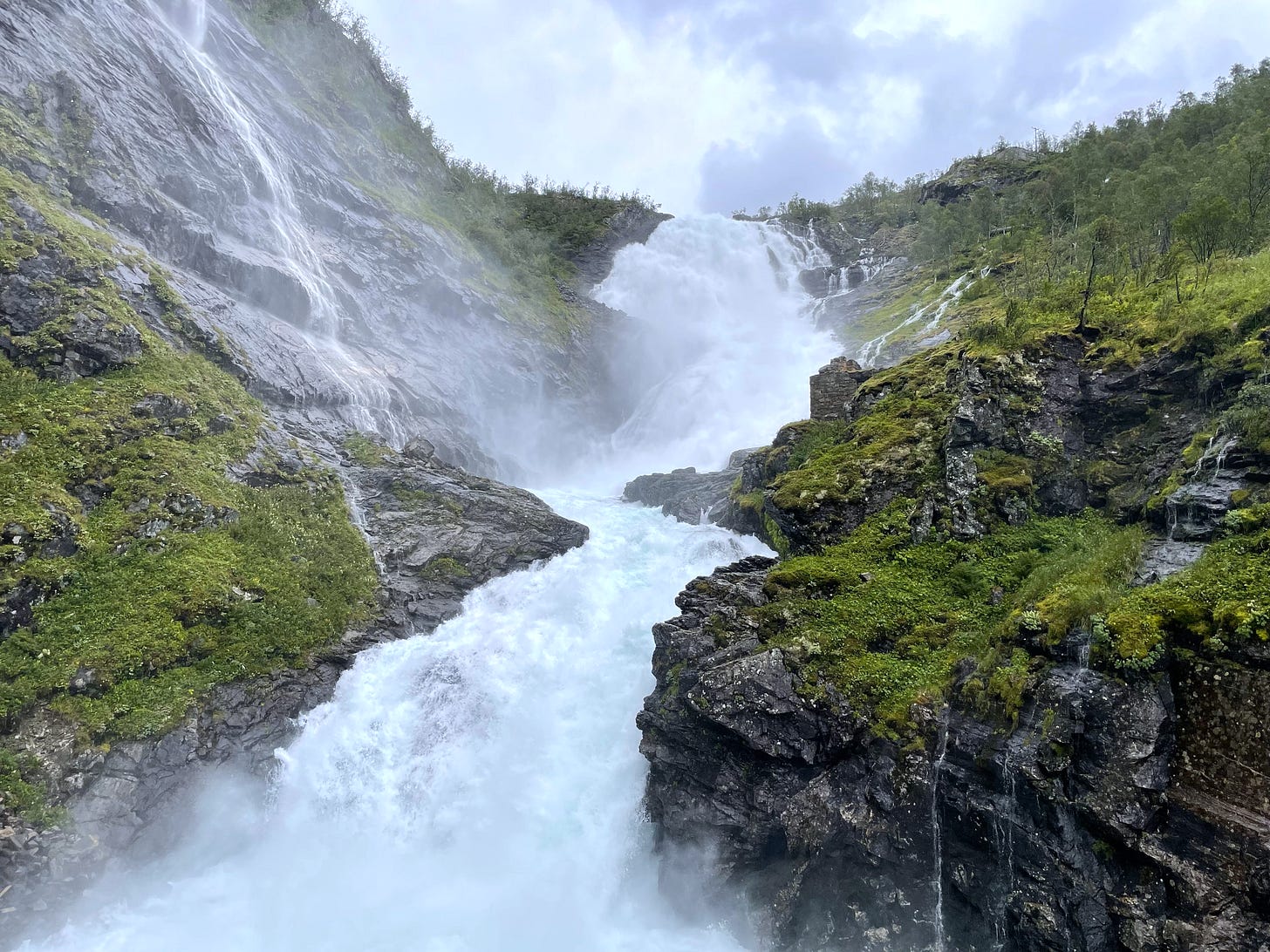


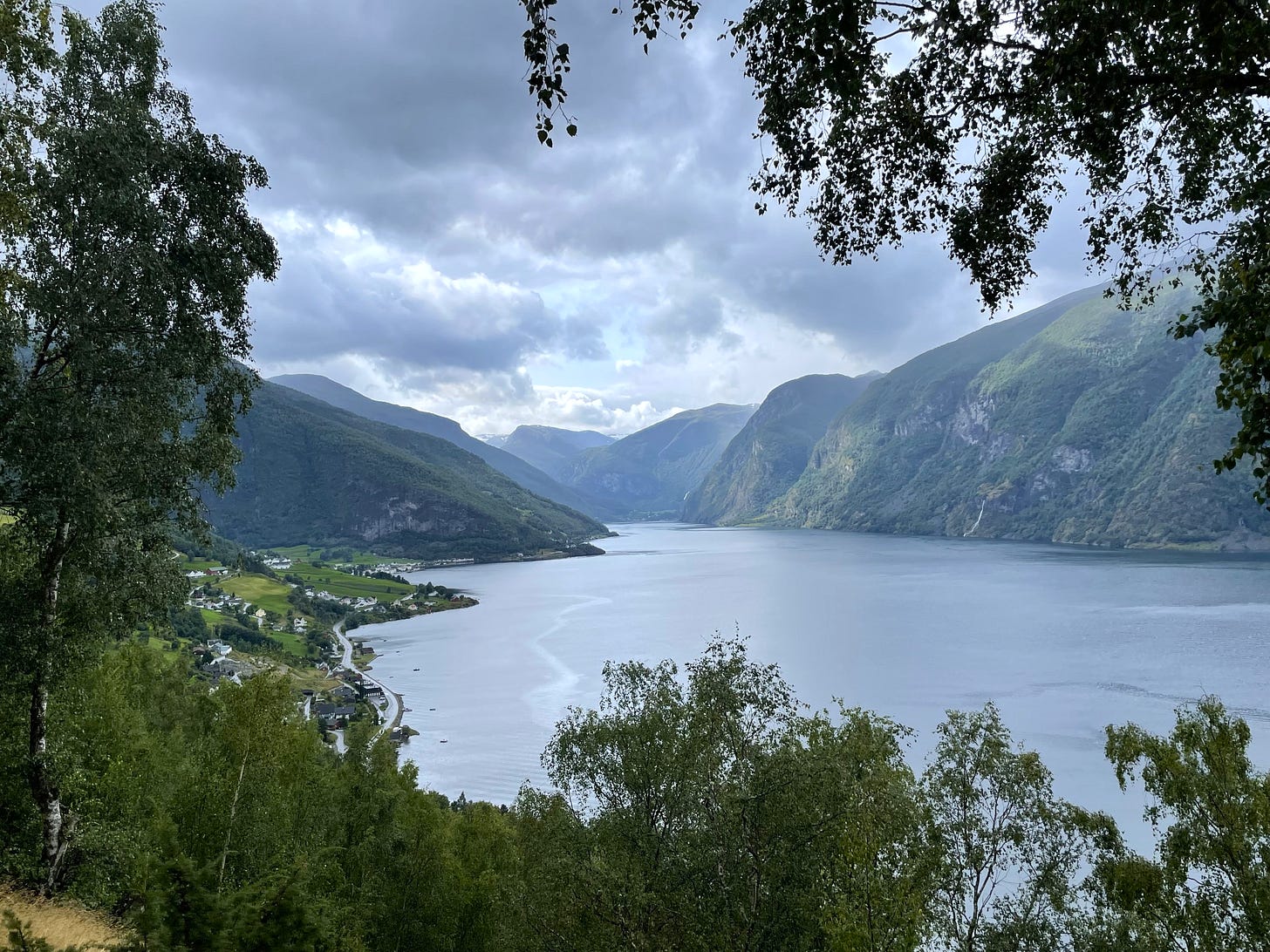

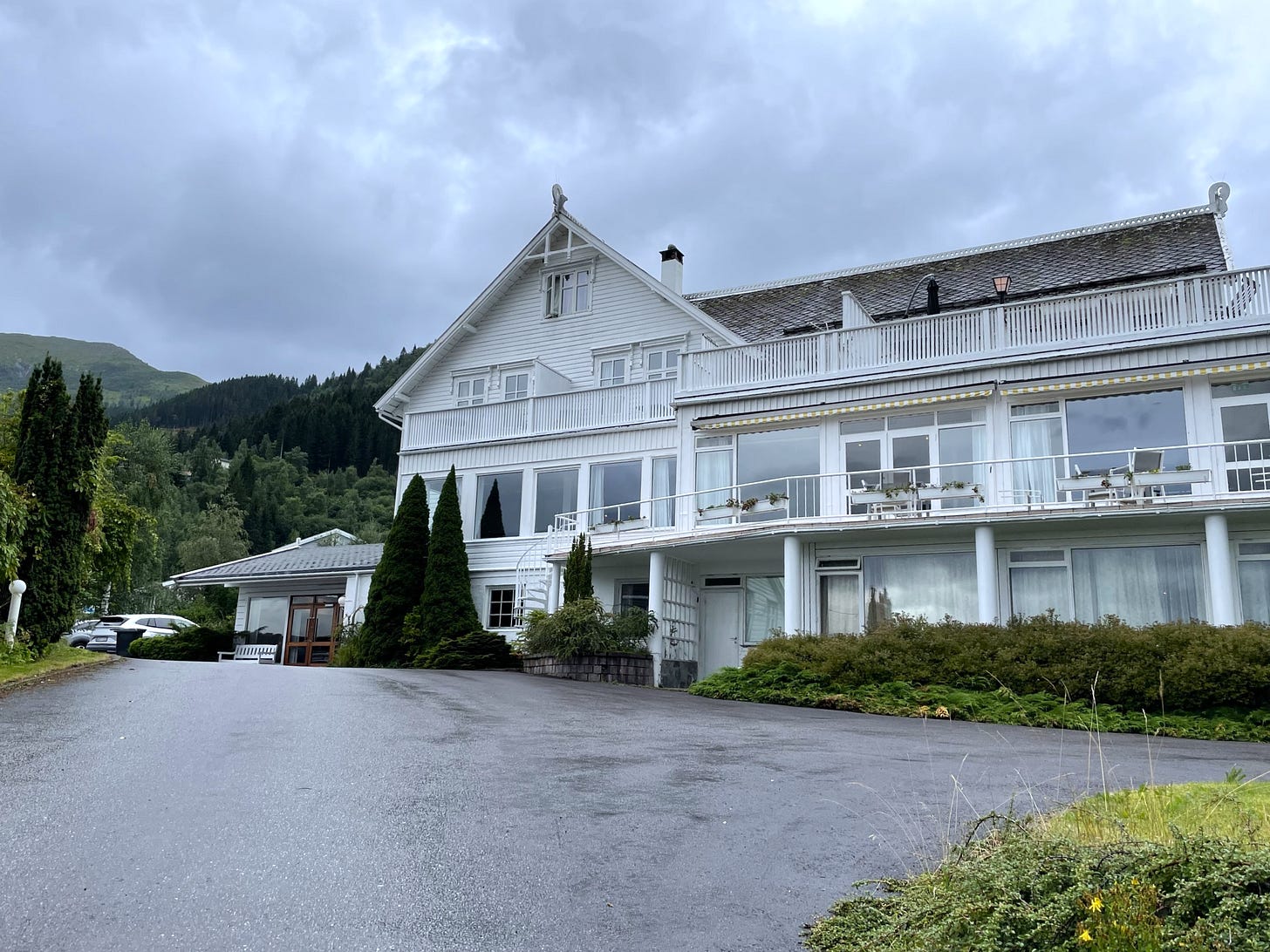
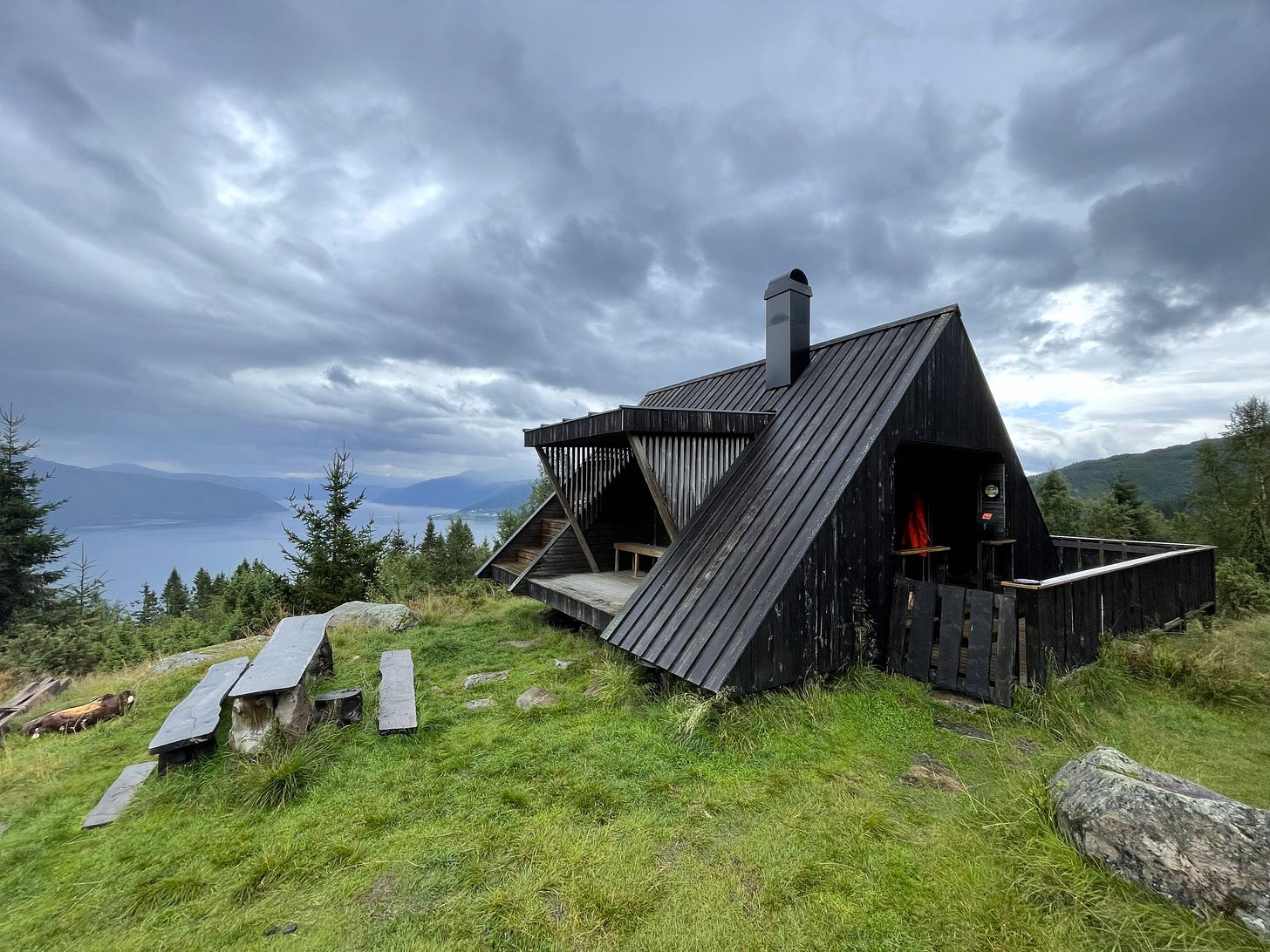
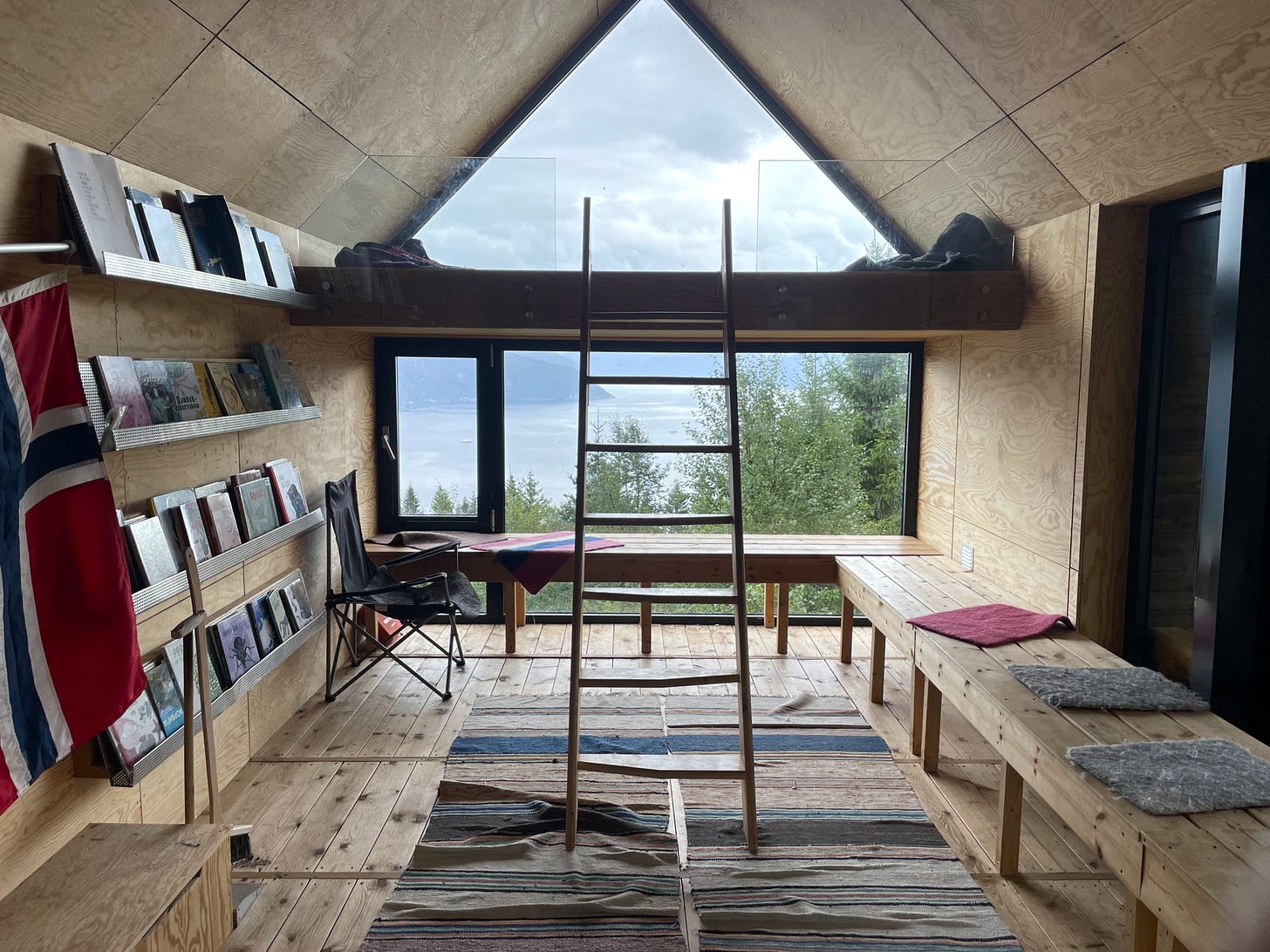
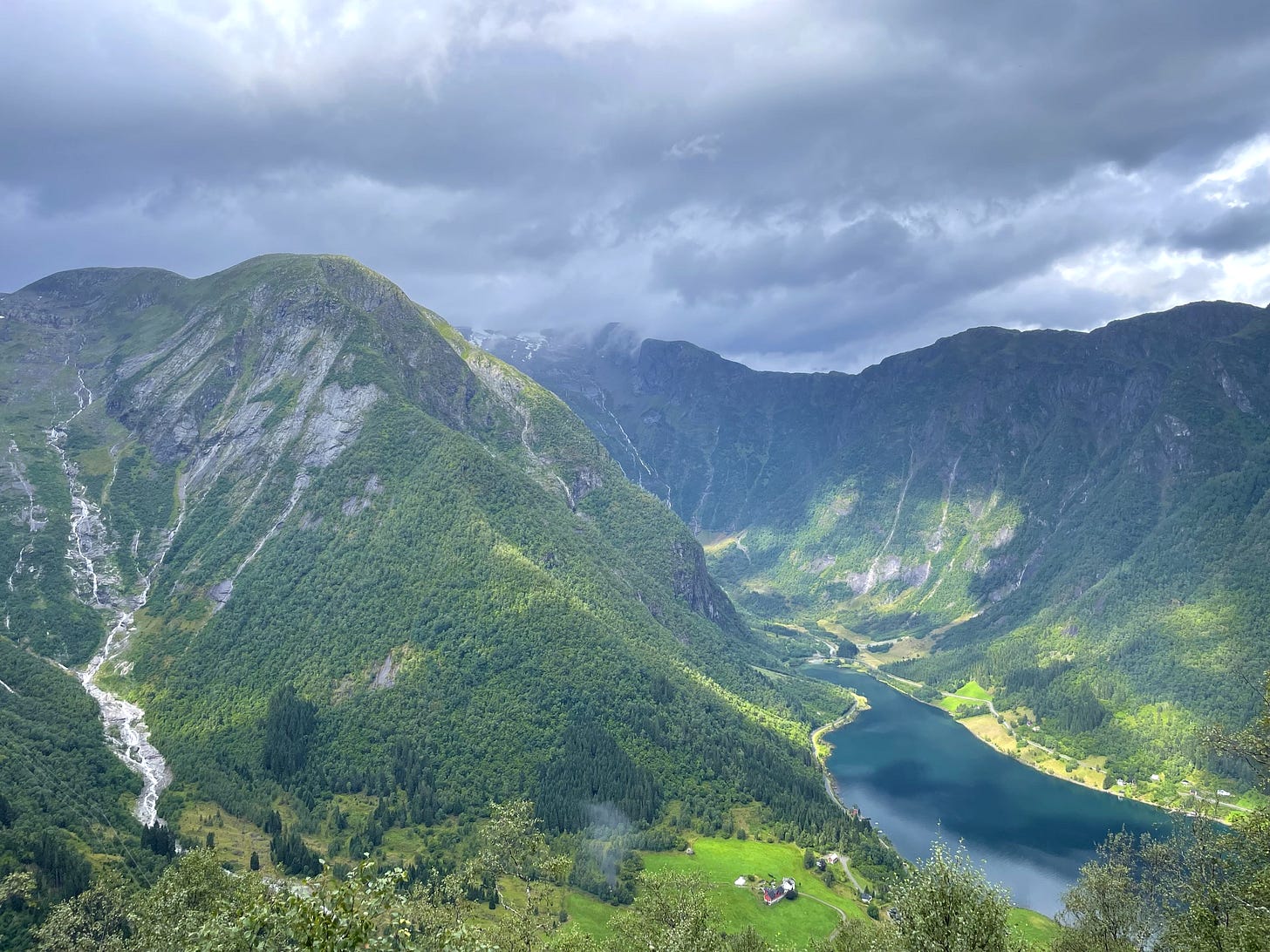

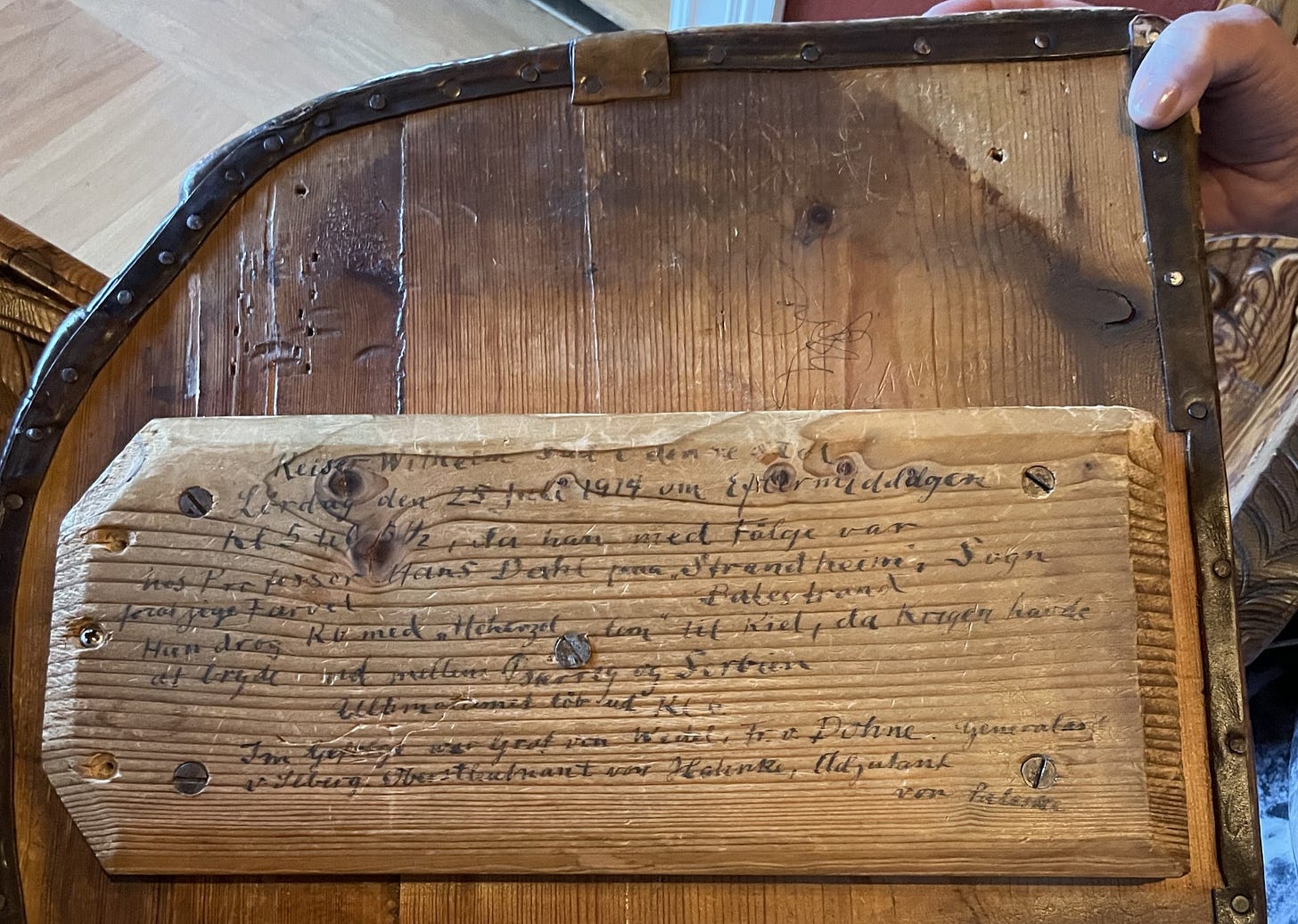
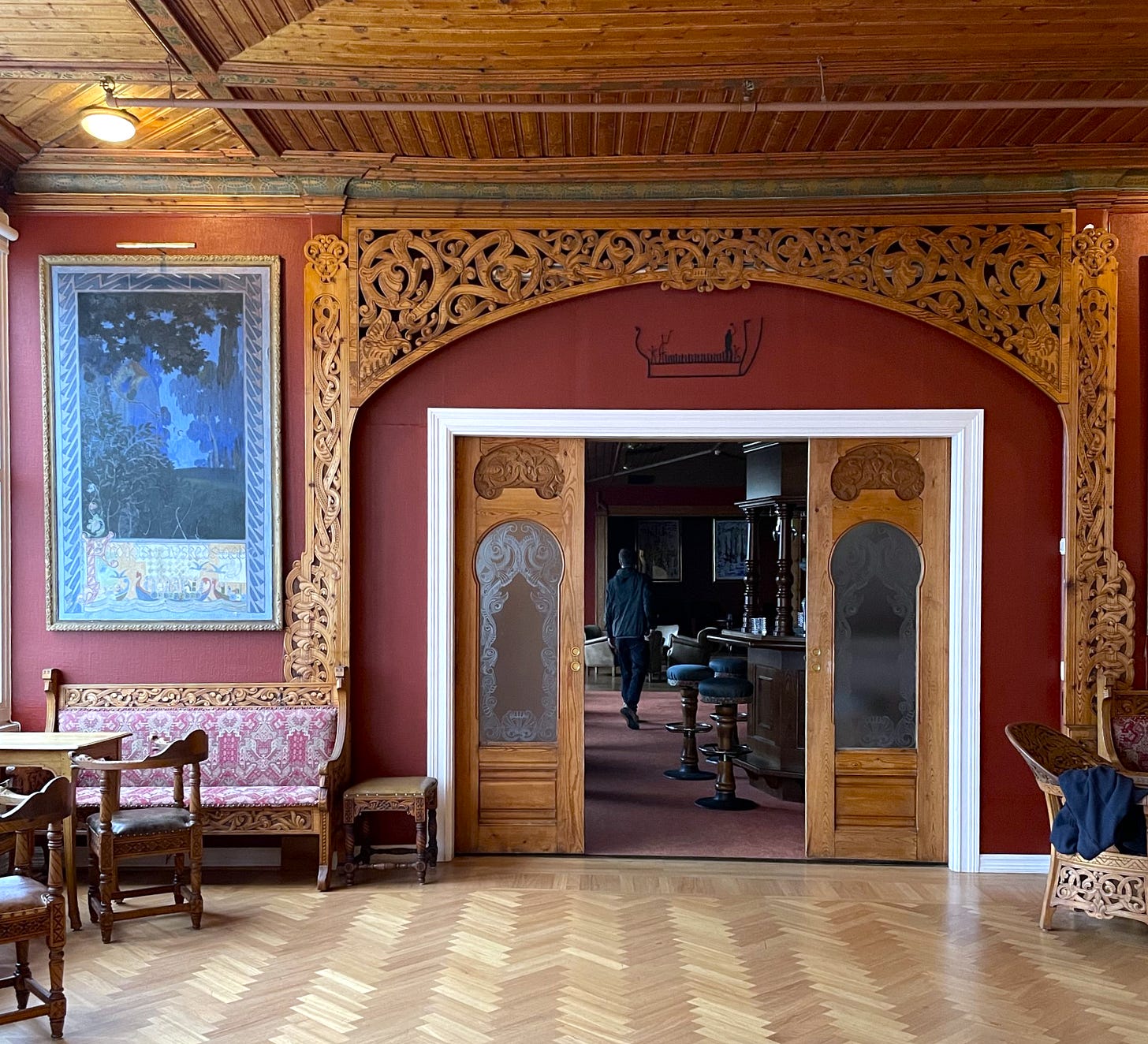

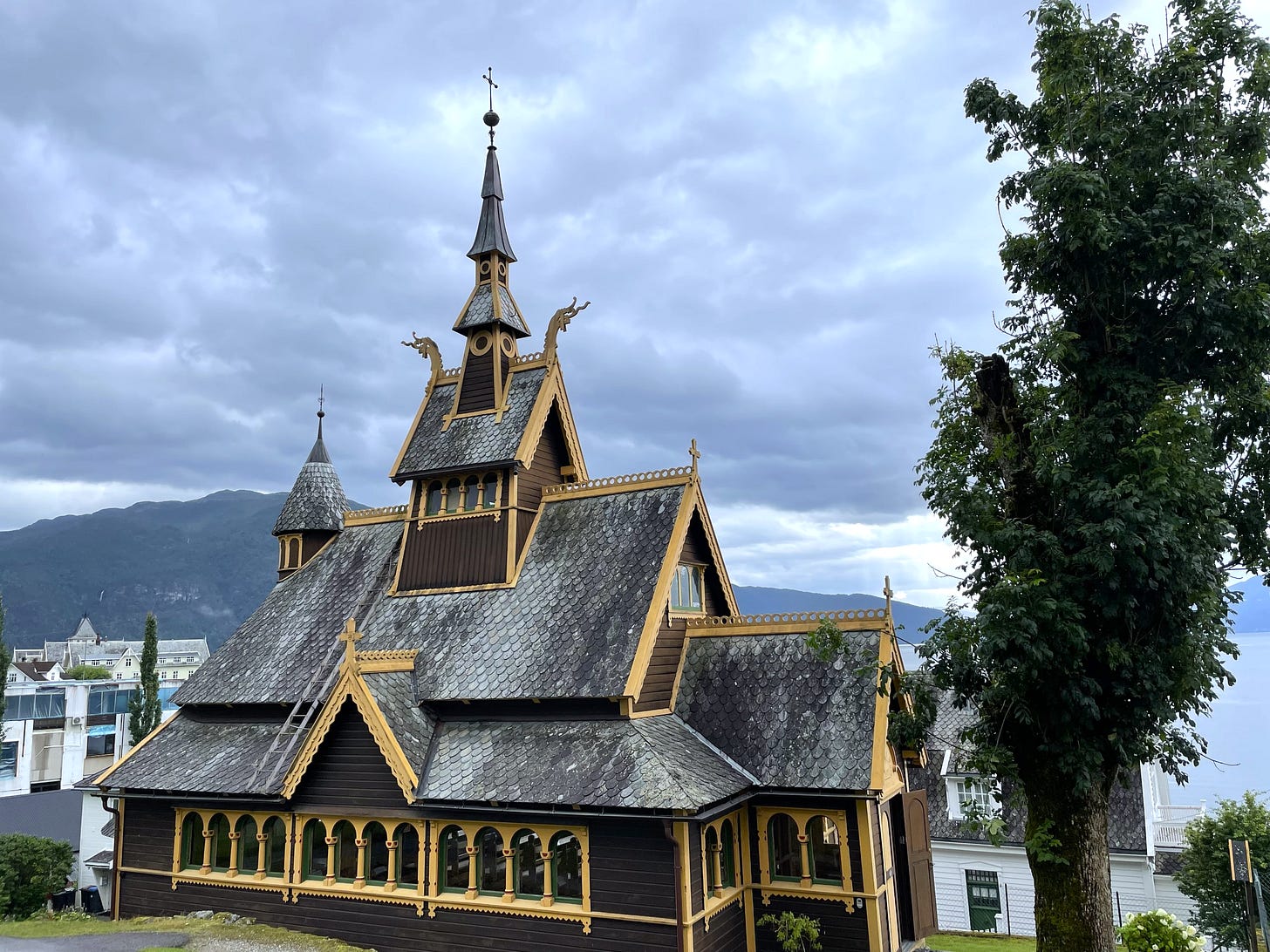

Beautiful writing about a beautiful place!!
So, no €20 reindeer hotdogs then?